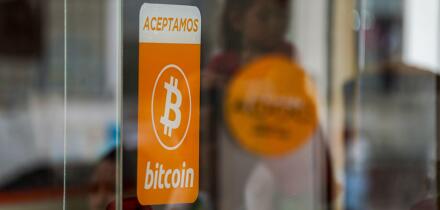Market smile gives information about the marginal distributions of the underlying. The information is enough to price all European products without any confusion. This includes for example call-spreads, risk reversals, strangles, parabola contracts, log contracts and so on.
However, it does not say anything about the way the accumulated variance splits between all possible contributors mainly: jumps, stochastic volatility, and local volatility. The splitting of variance can have an important impact on the joint distribution of the underlying observed at many dates. Therefore, different splitting can give different exotic prices.
In this article we concentrate on the SABR model and propose a way to distinguish the variance coming from strong correlation due to local volatility and the weak correlation coming from stochastic volatility, both of which explain the skew in the equity market.
Framework
We assume a SABR model as presented by Pat Hagan in his seminal article, Managing Smile Risk.
We suppose that.
This model has many interesting features. One of which is the possibility to obtain a closed form formula for pricing Europeans calls given by:
A more general formula can be derived with a higher accuracy. However, it is interesting to keep the formula as it is now as it shows clearly two components: the local volatility impact and the stochastic volatility impact.
A naïve approach for the impact of local volatility would
be to consider a term with (SK) ß-1 instead (SK) of, however, a classical rule of thumb stipulates local volatility is twice as steep as implied volatility.
It is worth noting that in the previous formula ß is strong correlation due to local volatility and * is weak correlation due to stochastic volatility. Splitting the skew explanation between the previous inputs is critical when pricing exotic options, as will be discussed for barrier options.
In the next section, we show how to build a calibration program to deal with this problem.
More Inputs
Market practitioners, traders and marketers have strong views on how at-the-money volatility behaves when spot moves. For example, in equity markets it is common to assume there is a so called sticky-strike. This means that the volatility for a given strike stays constant, having as a consequence that the at the money volatility slides the volatility smile when the spot moves.
It is important to notice that this behaviour is true only for one strike, the one that is always liquid. This is important as a global assumption for all strikes will create an arbitrage. Equity practitioners look at their vega as a function of spot precisely because they know they will have to hedge themselves with at-the-money options when spot moves. The cost of which is known as the vanna hedging cost. This is the most important cost for equity derivatives as opposed to FX derivatives where the main cost is the Volga-Voma hedge: vega as a function of vol.
Calibration Program
We define a criterion for fitting the parameters of the SABR model based not only on today's market implied volatilities but also on the way the at-the-money implied volatility moves.
Our criterion will be given by:
Where, "MktObsATMVols" is the market at the money volatilities observed in the past. This also can be changed to take into account the view of the trader or the risk manager.
Two remarks can be made now. The first one is that the weight that is given to each instrument can be proportional to the gamma of an at-the-money option which accounts for the likelihood of this instrument being at the money. The second remark is that the modification of the criterion by introducing a penalisation term will regularise the optimization allowing distinction between two sets of parameters but also will give a better result for the dynamic hedging--risk management--of the exotic under study.
Having an extra parameter to control the dynamic of the smile the trader has a way to stress test many different smile surface evolutions and therefore be conservative or aggressive depending on the current position of his book or view.
Smile Dynamics Sensitive Exotics
There are many exotic derivatives which are sensitive to the dynamic of the smile. We shall look at two particular ones, barriers and cliquets.
Barriers are sensitive to the dynamic of the smile because the best static hedging portfolio has to be unwound in case we touch the barrier. Therefore the barrier option cares about the new smile surface when the spot is at the barrier.
The difference between barrier prices for the two sets of parameters described above is from single to double.
The cliquet option is a forward start option where we care about the smile surface at a specific time, the reset time.
Conclusion
In this article we stressed the importance of model calibration on the photography of the smile today and on the smile evolution. This technique insures a better use of the model for dynamic hedging and a price related to the hedging cost.
This week's Learning Curve was written by Adil Reghai, a quantitative analyst at Merrill Lynch International in London.





